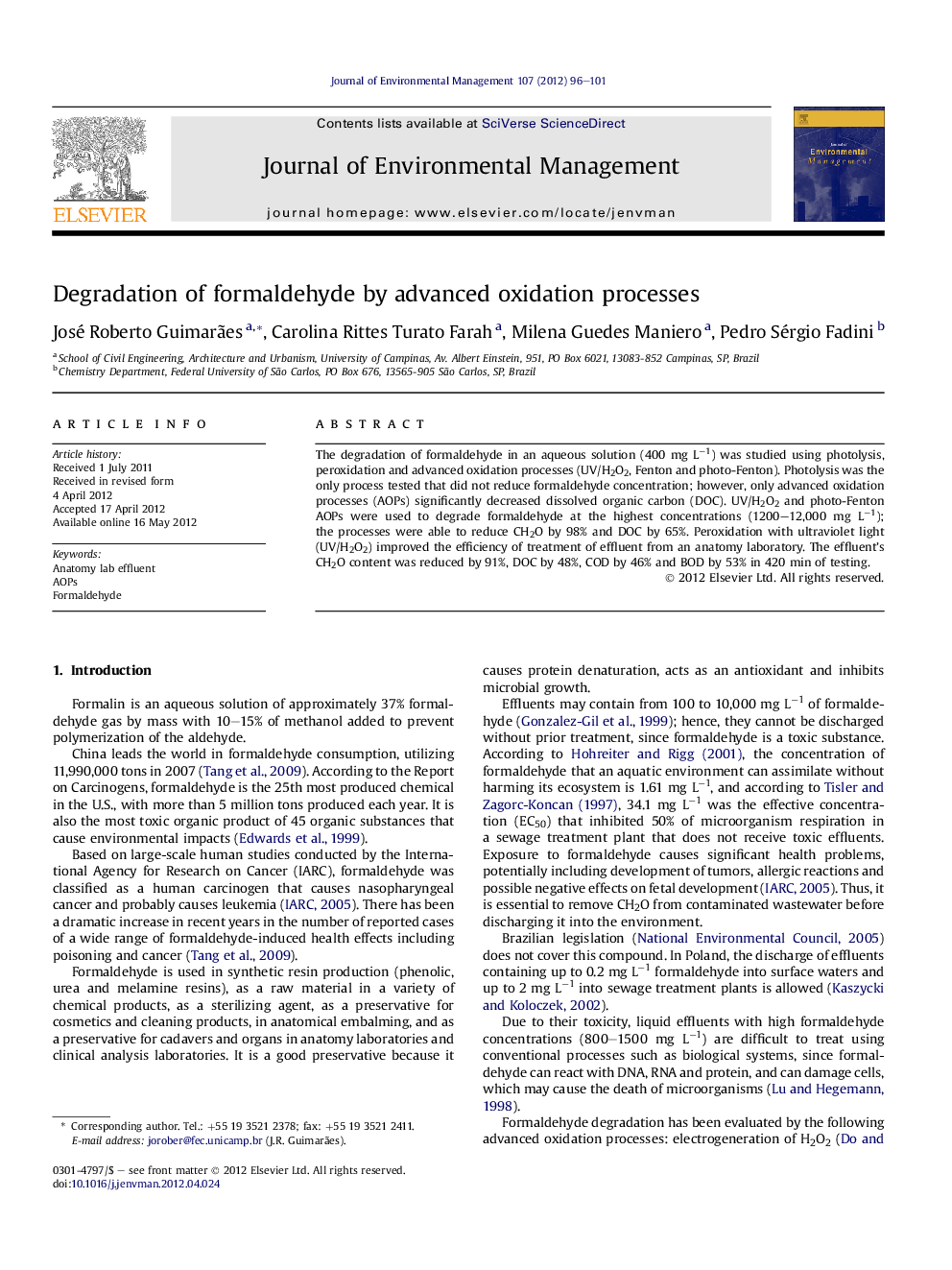| Article ID | Journal | Published Year | Pages | File Type |
|---|---|---|---|---|
| 1056667 | Journal of Environmental Management | 2012 | 6 Pages |
The degradation of formaldehyde in an aqueous solution (400 mg L−1) was studied using photolysis, peroxidation and advanced oxidation processes (UV/H2O2, Fenton and photo-Fenton). Photolysis was the only process tested that did not reduce formaldehyde concentration; however, only advanced oxidation processes (AOPs) significantly decreased dissolved organic carbon (DOC). UV/H2O2 and photo-Fenton AOPs were used to degrade formaldehyde at the highest concentrations (1200–12,000 mg L−1); the processes were able to reduce CH2O by 98% and DOC by 65%. Peroxidation with ultraviolet light (UV/H2O2) improved the efficiency of treatment of effluent from an anatomy laboratory. The effluent's CH2O content was reduced by 91%, DOC by 48%, COD by 46% and BOD by 53% in 420 min of testing.
► CH2O degradation by UV, H2O2, UV/H2O2, Fenton and photo-Fenton was evaluated. ► There was no photodecomposition of CH2O. ► Although the peroxidation was able to degrade CH2O, it was not able to reduce DOC. ► DOC removal efficiency was found to be: UV/H2O2 > photo-Fenton > Fenton. ► UV/H2O2 and photo-Fenton are indicated for treatment of anatomy lab effluents.
